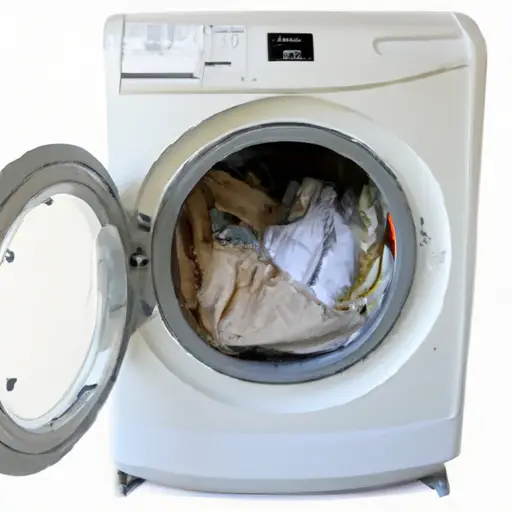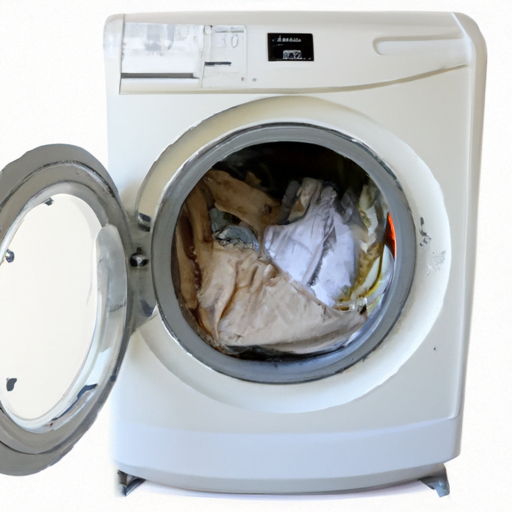So, you’ve decided to embrace off-grid living, huh? That’s awesome! It’s a great way to be more self-sufficient and reduce your impact on the environment. Now, picture this – you’re living off the grid, doing your own thing, and suddenly, you realize you need to do laundry. But wait, you don’t have access to electricity or a regular washing machine. What do you do? Well, fear not my friend, because today I’m going to tell you all about building your very own homemade washing machine.
Now, I know what you’re probably thinking – is it even possible to build a washing machine at home? Well, the answer is yes, it most certainly is! With a little ingenuity and some basic materials, you can have your very own off-grid washing machine up and running in no time. In this article, we’ll delve into the nitty-gritty details of how to build a homemade washing machine from scratch. From the materials you’ll need to the step-by-step process, we’ve got you covered.
So, if you’re ready to take on this DIY adventure and learn how to build your own washing machine, keep reading. Trust me, by the end of this article, you’ll have all the knowledge and confidence you need to tackle this project. Whether you’re living off the grid, camping in the wilderness, or simply looking for a fun and budget-friendly project, building a homemade washing machine is a skill that will come in handy for years to come. Stay tuned, my friend, and let’s dive into the world of DIY washing machines!

DIY: Building a Homemade Washing Machine
Off-grid living has become increasingly popular in recent years, with many individuals looking for ways to reduce their carbon footprint and become more self-sufficient. One essential appliance that is often overlooked when it comes to off-grid living is a washing machine. In this article, we will guide you through the process of building your own homemade washing machine, allowing you to keep your clothes clean and fresh without relying on grid electricity or expensive commercial machines.
Materials Needed
Before embarking on this DIY project, it is important to gather all the necessary materials. Here’s a list of the items you will need:
- Large container or drum: This will serve as the outer body of your washing machine.
- Lid for the container or drum: It should fit securely to prevent water leakage.
- PVC pipe: This will be used as the outlet for draining water.
- Agitator: You can use a wooden dowel or a sturdy stick.
- Manual or electric drill: This will be used for creating holes for the water inlet and outlet.
- Hose: A flexible hose will be used for the water inlet.
- Power source: If you choose to have an electric washing machine, you will need a suitable power source such as a small generator or solar panels.
- Screws and bolts: These will be used for securing the different components together.
Designing the Washing Machine
Before you start building the washing machine, it is crucial to have a clear design in mind. Consider the space available and the amount of laundry you typically need to wash. This will help determine the size of the container or drum you use. Additionally, think about the placement of the water inlet and outlet to ensure ease of use and convenience.
Constructing the Outer Body
The first step in building your homemade washing machine is constructing the outer body. Take the large container or drum and carefully cut a small hole in the center of the lid. This hole should be large enough to fit the agitator through, but small enough to prevent water from splashing out during the washing cycle. Secure the lid to the container or drum using screws or bolts, ensuring a tight seal.
Building the Inner Mechanism
Next, it’s time to build the inner mechanism of your washing machine. Take the agitator, whether it be a wooden dowel or a sturdy stick, and attach it to the center of the lid using screws or nails. Make sure it is securely fastened to prevent any accidents while the machine is in use.
Creating the Agitator
The agitator is an essential component of any washing machine as it helps to agitate the clothes, removing dirt and stains. To create the agitator, you can simply drill holes into the stick at regular intervals. These holes will create turbulence in the water, providing a thorough wash for your clothes.
Incorporating Water Inlet and Outlet
Now it’s time to incorporate the water inlet and outlet into your homemade washing machine. Using a drill, carefully create a hole near the bottom of the container or drum for the water outlet. Insert the PVC pipe into the hole and secure it using adhesive or screws. This pipe will serve as the drain for the water after each wash cycle.
For the water inlet, choose a spot near the top of the container or drum and drill a hole. Attach the flexible hose to the hole, ensuring a tight seal. This hose will be connected to a water source, whether it be a manual pump or a faucet, allowing water to flow into the machine.
Adding Power Source
If you opt for an electric washing machine, you will need to provide a suitable power source. This can be a small generator or solar panels. Ensure that the power source is securely connected to the machine, following the manufacturer’s instructions. If you choose a manual washing machine, no power source is required.
Testing and Troubleshooting
Once you have assembled all the components, it’s time to test your homemade washing machine. Fill it with a small load of laundry, add detergent, and start the wash cycle. Observe the machine closely for any leaks or malfunctions, and make any necessary adjustments or repairs. It may take a few tries to achieve optimal results, so be patient and persistent.
Safety Measures
When working with any DIY project, safety should be a top priority. Always wear protective gear such as gloves and goggles when using power tools. Take extra precautions when handling sharp objects or drilling holes. If you are using an electric washing machine, ensure that all connections are properly insulated and that the power source is grounded to prevent electrical accidents.
Conclusion
Building your own homemade washing machine is a rewarding DIY project for anyone interested in off-grid living or simply looking to reduce their reliance on commercial appliances. By following these steps and gathering the necessary materials, you can create a functional and efficient washing machine that suits your specific needs. Enjoy the satisfaction of clean clothes while reducing your environmental impact with this innovative and practical solution. Happy washing!





